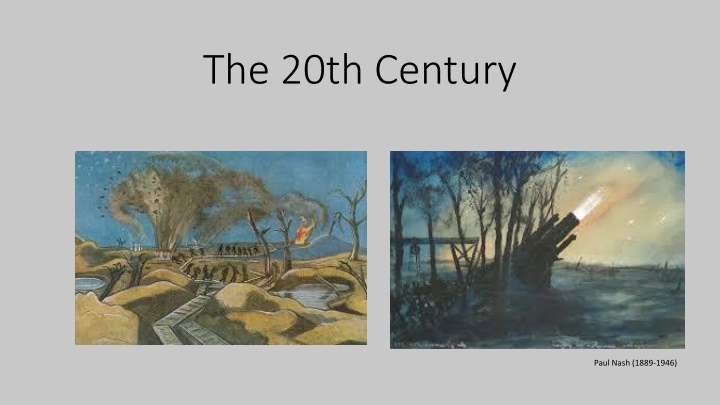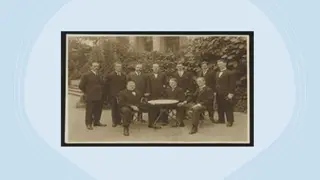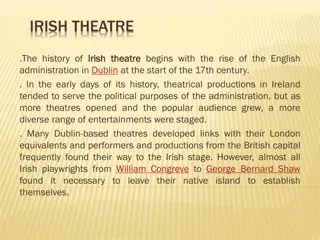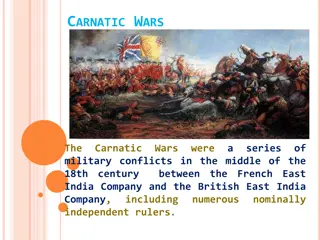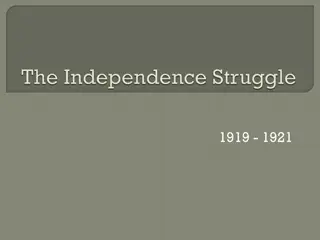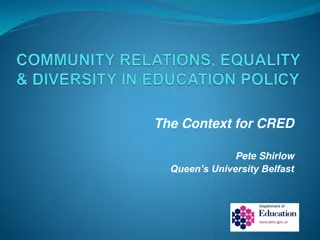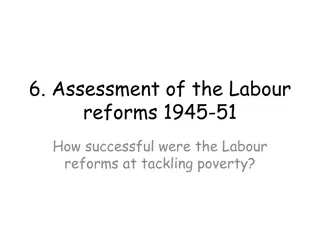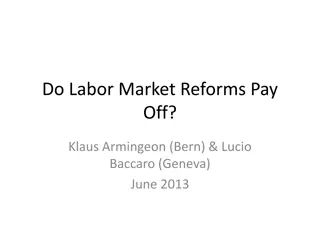British History Highlights: Social Reforms, World War I, & Irish Independence
The 20th century witnessed significant events in British history. From social reforms under King Edward VII to the outbreak of World War I and the quest for Irish independence, key moments shaped the nation's trajectory. The timeline includes pivotal reforms like the Education Act, Old Age Pensions Act, and National Insurance Act, leading to the foundation of a Welfare State. The era also saw George V navigating the challenges of war and post-war transitions, while Ireland grappled with the Irish Question and eventually moved towards independence post-civil war.
Download Presentation

Please find below an Image/Link to download the presentation.
The content on the website is provided AS IS for your information and personal use only. It may not be sold, licensed, or shared on other websites without obtaining consent from the author.If you encounter any issues during the download, it is possible that the publisher has removed the file from their server.
You are allowed to download the files provided on this website for personal or commercial use, subject to the condition that they are used lawfully. All files are the property of their respective owners.
The content on the website is provided AS IS for your information and personal use only. It may not be sold, licensed, or shared on other websites without obtaining consent from the author.
E N D
Presentation Transcript
The 20th Century Paul Nash (1889-1946)
Edward VIIs reign and the social reforms After the death of Victoria in 1901, Edward VII became king. During his reign (1901-1910) the Liberals gained supremacy in the election and important social reforms were passed which put the foundations of a Welfare State: The Education Act (1902), which paved the way to a a system of secondary school education; The Old Age Pensions Act (1908), which granted pensions to people over 70; National Insurance Act (1911) which made free medical treatment available to insured workers These changes involved also increasing attention to the status of women. The Women s Social and Political Union was founded in 1903 (in 1918 women over 30 were finally granted the right to vote; in 1928, suffrage was extended to women over 21)
George V (1910-1936): the war and the post war period The years before the outbreak of World War I saw the culmination of the process that had characterised British society during the Victorian Age such as: The falling of prices and the doubling of wages of the lower class; Widespread industrialization and new technical innovations; The growth of population and urban spaces; The extension of transport network. In July 1914 World War I broke out. France, Russia and Britain sided to Serbia against Austria and Germany. After the declaration of war George changed his German name of Hannover for the English name Windsor.
The Irish Question (1) The majority of the Irish population was Catholic and they generally supported the idea of a more independent Parliament in Dublin, but the majority Protestant population of Ulster (Northern Ireland) wanted to stay under British rule. This tension beween the Unionists and the Republicans broke out on Easter Monday in 1916, when a group of Republicans organised a revolt in Dublin. This revolt was violently suppressed. As a result, support for Irish independence grew among the general population, and the Easter Rising became a symbol for Irish resistance to British rule.
The Irish Question (2) After the war, Ireland took importance steps towards independence. In 1918 the Sinn Fein party proclaimed an Irish Republic; In 1919 the IRA (Irish Republic Army) was created and a civil war began. The war ended in 1921 and in 1922 the Irish Free State was born, excluding Ulster, which remained part of the United Kingdom
Modernism Modernism is a term which is not only associated with literature, but also with the great changes which affected all the arts- music, visual arts, cinema- in Europe and America starting after 1910 and flourishing in the 1920s and 1930s Background: The violence and destruction of World War I cause a sense of instability, and traditional values of patriotism, identity and faith started to fade this leave people with a sense of distrust and without a clear reference point. The artist feels alone and misunderstood and a new interest in the inner self grows
Modernism: features A radical break with the literary tradition of the 19 th century; they try new ways of expression through experimentation in form and style; Modernist work is typically fragmentary and relative, favouring subjective perceptions of reality the truth is fragmentary and changeble Urgency to represent the variety of modern urban life. One way of trying to create order out of the chaos of the modern world was the recourse to primitive myths
Freuds theory of the unconscious According to Freud the development of our personality is greatly affected by the unconscious, the hidden part of ourselves. Man has no control of this side and his reason could play no part in dominating or influencing it . To analyse the unconscious Feud gave great importance to the interpretation of dreams and to the free association of thoughts, a theory according to which each individual associated his ideas freely, guided by the personal experiences, desires and impulses buried in the unconscious. Our perception of reality is therefore fundamentally subjective. Some writers were fascinated by his methods of investigating human personality and tried to apply them to the analysis of the workings of the mind of their characters (James Joyce, Virginia Woolf).
When you sit with a nice girl for two hours you think it's only a minute, but when you sit on a hot stove for a minute you think it's two hours. That's relativity Einstein Dal - The persistence of the memory
Bergson s philosophy of duration and the relativity theory by Einstein Bergson distinguished between the mathematical time of science and the time of the mind, which is lived in a personal way and changes from one person to another, or from one situation to another. Bergson called this second time duration . Duration is the way we experience the world moment by moment. The theories of Bergson contributed to question the traditional idea of linear narrative in modernist writers. In the same period Albert Einstein was elaborating the theory of relativity. He demostrated that even time is relative, because it is depedent on the viewpoint and the circumstances. With Einstein s theory the idea of an objective reality was put in doubt.
Modernism and the novel From a stylistic point of view, Modernist novels broke with the tradition: The omniscient narrator as moral and spiritual guide disappeared and was replaced by the direct or indirect presentation of character s thoughts, feelings and memories; The chronological presentation of a story with its orderly sequence of events in a well-made plot disappeared and is replaced by a new concept of duration that reproduced the inner reality of the characters
Stream of consciousness techniques The psychologist William James coined the expression Stream of consciousness to indicate the continuous flow of thoughts and sensations that characterises the human mind. This unspoken activity of the mind was used in two narrative techniques: Direct interior monologue (or free direct speech), which refers to the direct presentation of a character s stream of consciousness without the guiding presence of an author or narrator; Indirect interior monologue (or free indirect speech), which refers to the indirect presentation of character s thoughts filtered through the voice of anonymous narrator
